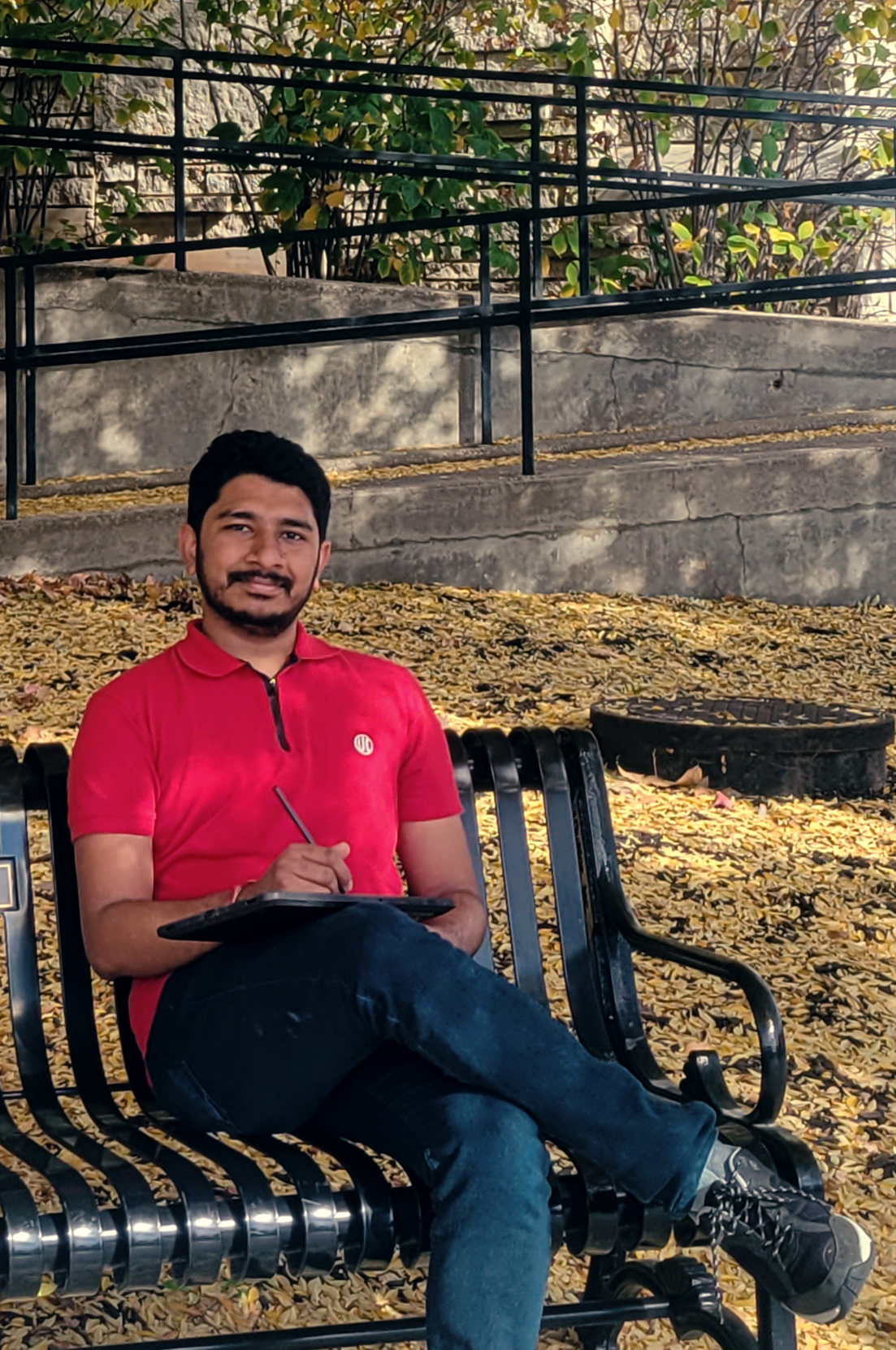The essence of mathematics lies in its freedom
- Georg Cantor
 Hi! I’m Arun, a math PhD student at University of Missouri. I am originally from Chennai, a coastal city in South India, and I moved to the U.S. in the fall of 2016. I obtained my dual B.S/M.S. in math from Georgia State University, where I spent some time studying commutative algebra. During this time I worked with Dr. Florian Enescu and wrote a thing about numerical semigroup rings. $\\$
Hi! I’m Arun, a math PhD student at University of Missouri. I am originally from Chennai, a coastal city in South India, and I moved to the U.S. in the fall of 2016. I obtained my dual B.S/M.S. in math from Georgia State University, where I spent some time studying commutative algebra. During this time I worked with Dr. Florian Enescu and wrote a thing about numerical semigroup rings. $\\$
I am currently pursuing my doctoral studies under the guidance of Dr. Dan Edidin. In my research, I try to utilize ideas from algebraic geometry and representation theory to approach problems in information theory, signal processing, and applied mathematics at large. More on this below. $\\\\$
In recent times, my research has also seen some dalliance with the vast realm of data science – and I find myself attracted to highly relevant problems that come from this area. I have invested some time and effort to cover some ground in the relatively young but fast growing field of topological data analysis. I have also been playing around with some toy problems in quantum computing where recovering and understanding phase components of vectors distributed on the sphere is paramount.
Research interests.
My current research utilizes results from algebraic geometry and representation theory to say meaningful things about recovering signals from “phase-less” measurements. Such problems are typically categorized as (a generialization of) phase-retrieval problems. It turns out that the problem, as presented above, is ill-posed without prior information (constraints on the signal). My primary engagement in phase retrieval is with situations emerging from areas such as X-ray Crystallography, Multi-Reference Alignment (MRA), and Cryo-Electron Microscopy (cryo-EM), where one can impose a very natural prior of (generic) sparsity with respect to a basis. Some recent joint work has opened up some avenues to work with priors where the signal lies in a semi-algebraic set of some dimension. A widely relevant example of a semi-algebraic set is the output of a (suitable) neural network equipped with a semi-algebraic activation function (eg. ReLU). I try to write some quick informal blog posts about results relevant to my research. These blog posts can be found here.$\\$
In addition to my primary engagement, I try to think (and read) more about invariant theory, applied algebraic geometry, topological data analysis and quiver representation theory.
Co-curricular
In addition to research:
- I run the math directed readings program (DRP).
- I cohost the weekly graduate student seminar.
- I serve as the president of the graduate student chapter of the AMS.
Feel free to send me an email (aszxy [AT] umsystem [DOT] edu) if you would like to get involved.
Extra-curricular
When I am not thinking about math, I am usually writing about math here. When I am not writing about math, I am usually biking through rural Missouri or climbing rocks.